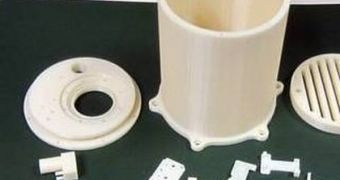The Moon may not strike you as having the most fertile soils, and the American space agency may seem to have little to do with agriculture at first. But looks can be deceiving, as a new NASA project reveals. Officials with the agency say that they plan to restart an initiative that will see vegetables growing on the surface of the Moon.
Plants as diverse as cress, turnips and basil may be grown inside specially designed canisters that could one day provide the necessary nutrients and dietary requirements for astronauts living on the Moon, Mars, or other locations within our solar system.
At this point, dry, pre-packaged food is the only source of nourishment for astronauts in space, and this diet can get stale very quick. By allowing them access to fresh food, NASA hopes to make their lives better, and their future missions more efficient and enjoyable.
However, if plants are to be grown in space, they must first survive the tough road to get there. This is where the high-tech terrariums come in. Attached to this article is an image showing a 3D-printed mock-up of how such a container might look like when it blasts off to space.
One of the most important goals set by the new project is to determine, once and for all, whether or not humans can successfully live and feed themselves on the Moon. A prospective settlement there would have to be self-sufficient to some extent; otherwise, the costs of ferrying food up there would soon turn prohibitive.
“This will be the very first life science experiment performed in deep space. Our goal is to show that the living organism can thrive in what really is a hostile environment,” says project researcher and plant scientist Bob Bowman, as quoted by NPR.
“The moon's a weird place. On the side that's facing the sun, the surface temperature is about 150 degrees Fahrenheit (65°Celsius). On the other side, it's negative 150 degrees (-110C°),” the expert adds.
But temperatures are not the only issue here. Extreme cosmic radiations can also damage plants even before they get on the Moon. If the trip is successful, then any prospective vegetation would still have to battle the lunar gravity, which is one sixth as strong as Earth's.
All of these issues, and more, will be taken into account as NASA develops a new type of terrarium, to be used exclusively for long-term, space exploration missions.

 14 DAY TRIAL //
14 DAY TRIAL //